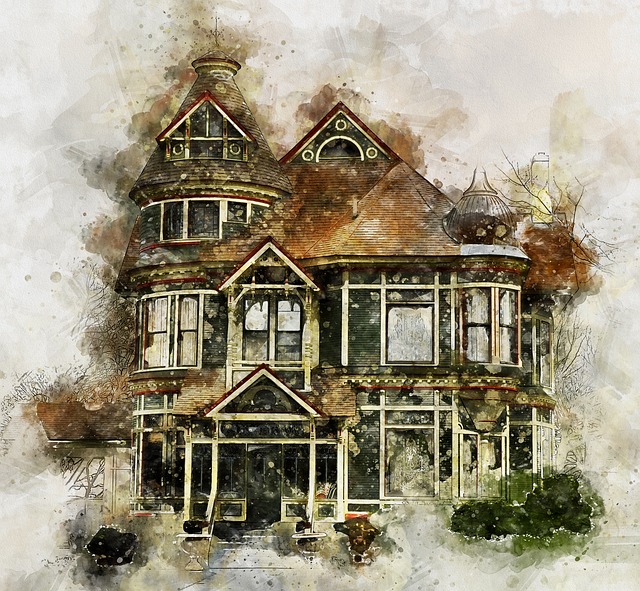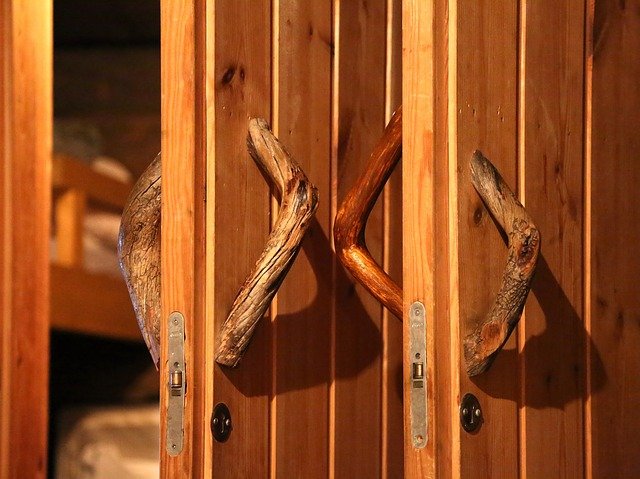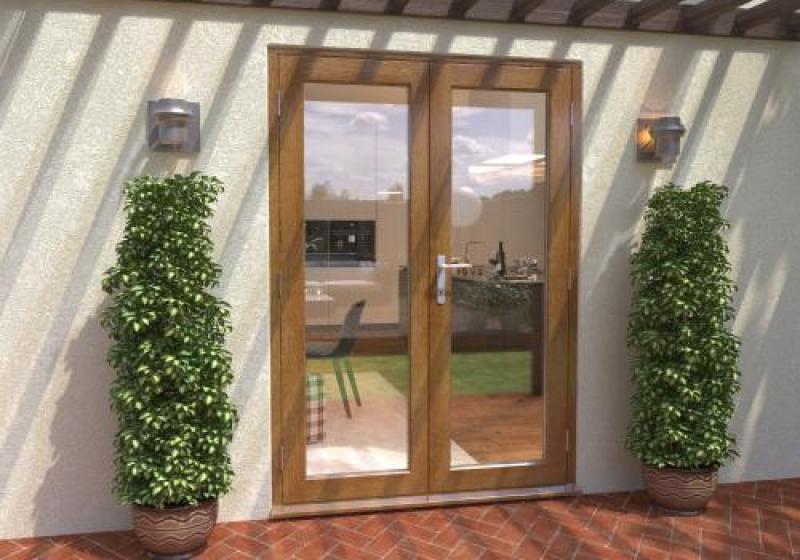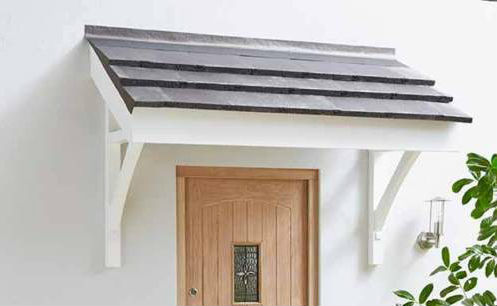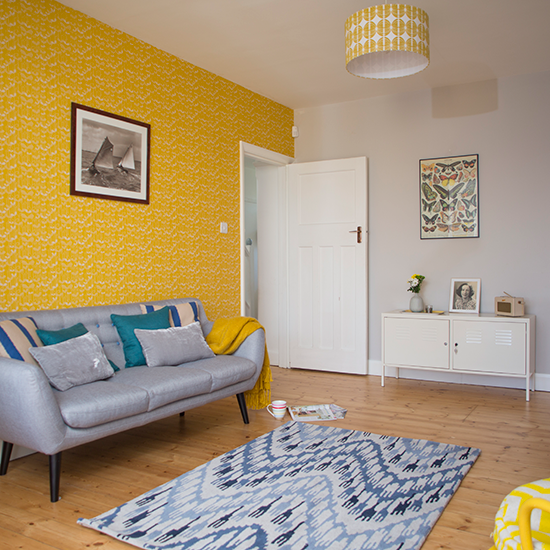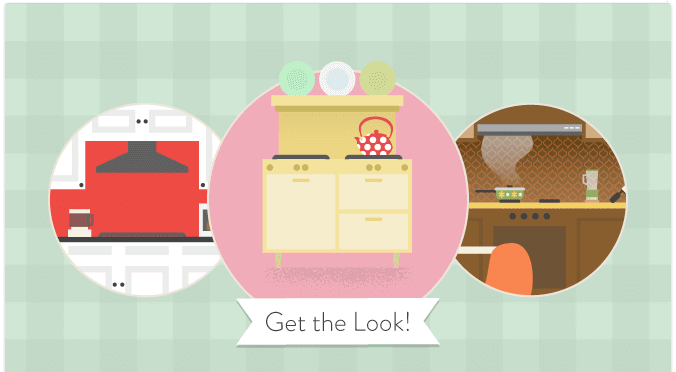Express Doors Direct ▸ Blog ▸ How to find the perfect Victorian doors for your home
If you’re renovating a period property, finding authentic design options can be intimidating. Some periods have subtle decorative differences that it’s easy to confuse, and one wrong decision can undermine hours of painstaking research when you’re looking for a truly cohesive finish.
Finding the right doors for your vintage home is a key way to achieve authenticity. Different centuries, even different decades, have their own distinctive features and designs and getting that right can add a legitimate feel to the rest of your house.
We’ve put together this primer to help anyone who’s looking for doors to match a Victorian-style design. We’ll cover the classics of Victorian door design, covering internal and external doors and a few tips to help you find modern doors that will match a Victorian design without the hassle of salvaging originals.
Whether you’re looking to add a period touch to a contemporary home, or restore a Victorian townhouse to its former glory, here’s our guide to building an authentic look.
What did a Victorian internal door look like?
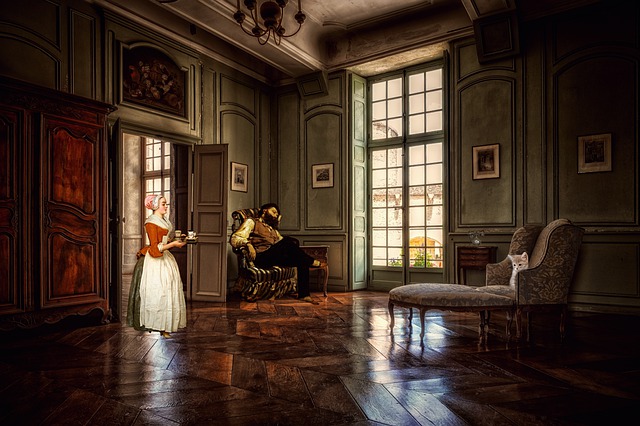
Due to the fashions of the time, most of the internal doors in a Victorian house had a similar look, though there were subtle differences.
Panelled door styles were very popular, as flush doors are a very modern choice. These panelled door designs were engineered to allow the doors to ‘breathe’. The panels were loosely fitted into grooves in the frame of the door leaf, which was made of thicker, solid wood. This allowed the doors to shrink or expand with the temperature or moisture inside the house without damaging the door. Beading or moulding was fixed onto the doors to hide the joins and support the panels, adding a little bit of added decoration to the otherwise sleek, simple design.
These panelled doors tended to be solid wood rather than having any glass in them.
Glass was expensive at this time, with large windows being relied on to let the light into the house rather than glazed doors sharing light between rooms. Glass panels were usually kept for the front door of a Victorian home.
How many panels does a Victorian door have?
The classic look for Victorian interior doors is a simple 4-panel design.
These were arranged with thick strips (mullions) across the centre and bottom. The panels were not quite symmetrical, with two longer panels at the top and shorter, almost square ones at the bottom.
What are Victorian Doors Made Of?
The majority of interior doors in the Victorian period were made using pine, though it was not the same ‘pitch pine’ that is used to make contemporary doors.
Mahogany and oak were also used, though both types of wood were very expensive. You would only see them in upper-class homes, usually belonging to people with land.
The use of solid timber meant there was a lot of weight to most doors in Victorian properties. This was particularly the case for important rooms like the dining room or reception rooms, where thick, solid doors were embraced as a way of excluding eavesdroppers.
Conversely, servant/staff rooms would usually have light doors made of thinner wood as their secrets weren’t considered worthy of keeping.
Did Victorians paint their doors?
Many Victorian interior doors were painted, particularly the cheaper softwood ones. These were given a luxury finish with a coat of neutral paint like an off-white, cream or grey.
Doors made of expensive wood like oak and mahogany, however, wouldn’t be hidden away under a coat of paint. They would get a generous coat of wax to make the most of their beautiful wood grain instead.
Some thrifty Victorians would even take a cheaper softwood door and dab it with red ochre to dye the wood. This was done to recreate the look of mahogany, and bring a little luxury to a less financially-endowed house.
Did Victorians use gloss paint?
For both interior and exterior woodwork, the Victorians used oil-based paint that had a similar consistency and looks to gloss paint. It was popular to use on front doors, interior doors and door frames for all the same reasons gloss is popular for contemporary homes – it’s easy to use, easy to clean and impressively durable.
Of course, a lot of Victorian paint also contained lead, making it quite poisonous.
Another key fact to remember about Victorian paint was the colours. Doors, skirting and door frames would never have been the ‘Brilliant White’ that we often use today. This colour didn’t become available until after World War II, so slightly off-white or cream are more authentic.
What Did Victorian Front Doors Look Like?
The Victorian front door style is almost iconic. These exterior doors were often used as a status symbol, with a smart paint job, decorative glass elements, and dazzling door furniture. They often featured intricately carved panels, with equally decorative architrave around the frame.
Of course, the front door was just one small part of a grand Victorian entrance. They often had elaborate porches as well or a hood above the door. The look of your building exterior was a key way of showing wealth in Victorian society so no expense was spared in having perfect doors and windows.
What Colour Were Victorian Front Doors?
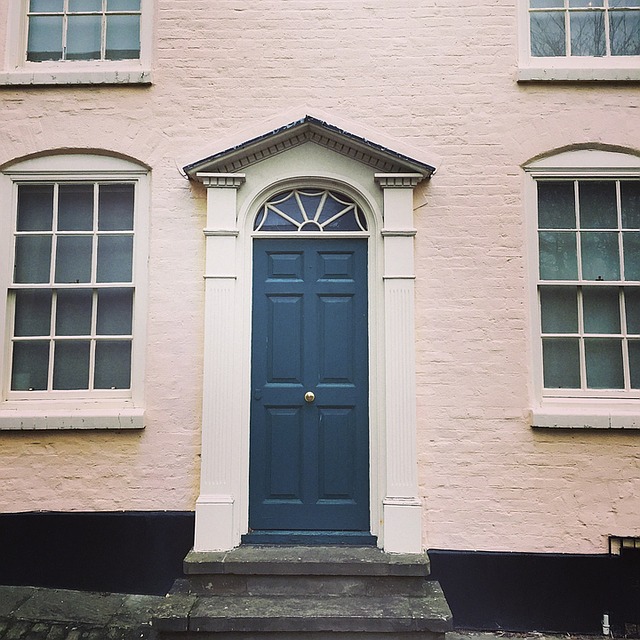
Victorian-style front doors were commonly painted in block colours. Dark green and blue were among the most common colours, with olive green and deep red also popular.
Door furniture formed key features on a Victorian front door. Brass door pulls, shaped knockers and letterboxes would all be highly polished to give a gleaming finish. Elaborate iron hinges and hardware were also a popular choice, finished in black to create a point of contrast.
Did Victorian Front Doors have glazing?
The elaborate designs of Victorian front doors made glazing a prominent feature throughout the period.
Georgian houses often had fanlights in the front door, and some of these remained throughout the Victorian period, mainly the ones with intricate stained glass and ironwork designs.
Historically, glazing has often been seen as a status symbol in itself, with large or multiple timber windows suggesting significant wealth. This held true for the Victorians front door too.
As the period progressed, manufacturing advances meant that glass got strong enough to support larger panes. In some doors this meant two long but thin panes (echoing the panel shapes of interior doors) but by the end of the period this could also mean the whole top half of the door could be glazed.
Stained glass elements were also common. The popularity of William Morris designs meant many doors featured leaded or decorative glass with floral patterns and coloured panes.
Picking The Perfect Period Door For Your Property
When you’re looking for new doors for a period property, your first thought might be to visit your local reclamation yard for authentic doors. Renovating a period-perfect door can be rewarding (if drawn-out) and the cost might appear lower.
But when it comes to new doors, modern ones will always have an edge. Cost-wise you won’t need to fork out for the tools (or the time!) to renovate them, plus door manufacturing technology has come a long way over the last 150 years. This means contemporary doors will usually be cheaper, more energy-efficient and provide better security. Particularly when it comes to front doors.
If you buy a brand new door you will also be getting it at the start of its life. With minimal maintenance, you will get to enjoy the entire lifespan of the door, without worrying about undiscovered damage appearing later on. You will also have access to greater range of features, colours and specialist door types like a fire door (not a concern the Victorians were able to address).
Buying a modern interior door or front door doesn’t mean you have to abandon all hopes of authenticity though. Here are a few tips to help you find Victorian styles to keep your house looking period-authentic.
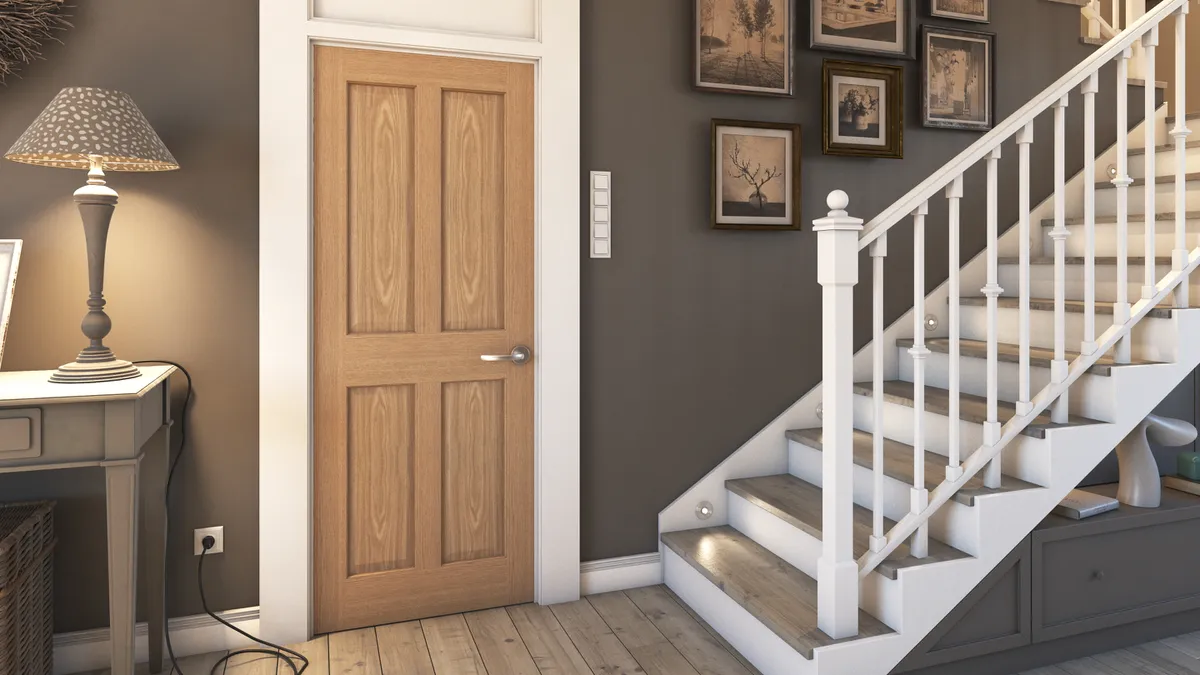
- When choosing interior doors, solid core oak or white primed doors will give the heavyweight, quality feel the Victorians loved without stretching to the price of solid wood
- If you want a neutral pale for your interior door or door frame, make sure you stick to an off-white rather than a bright white
- Look for four-panel doors with the smaller panels at the bottom, otherwise, you could unintentionally lean more towards an Edwardian style
- If you’re choosing a glazed door (be it an internal or a front door) look for decorative ‘leaded’ glass with stained decoration)
- The bright, colourful and durable finish of composite Victorian front doors make a great alternative to an authentic timber Victorian front door. Plump for a panel door with decorative toughened glass, and you’ll get a door that looks every bit as lovely as an authentic Victorian choice but with all the convenience and security that modern homes enjoy
- If you want to introduce a bigger set of doors while keeping your decor authentic, then a set of double doors or tall double doors are a better choice than folding doors or sliding doors. However, stick with solid doors rather than glazed ones.
If you want the perfect doors for your period home without the hassle of rummaging around reclamation yards, take a look at our huge range of traditional style design options. From 4 panel doors through to fire doors, we have styles to suit any building with a Victorian theme.
Related Posts:





Shop bestsellers and see what's new in at expressdoorsdirect.co.uk/internal-french-doors



Make a note of these if you're planning on placing an order or contacting our team in the next few days.
Shop online at expressdoorsdirect.co.uk as usual and we'll pick everything up when we get back. Thanks!



Get your space set up for summer with a discount on our bestselling black heritage style #frenchdoors T&Cs apply.
Browse all offers at expressdoorsdirect.co.uk/special-door-offers
@followers





Buy great value, energy efficient #PatioDoors that complement the style of any property.
Shop standard sizes in on-trend designs or ask our experts about custom doors made to measure.
 Explore our collection at expressdoorsdirect.co.uk/patio-doors
Explore our collection at expressdoorsdirect.co.uk/patio-doors



















































